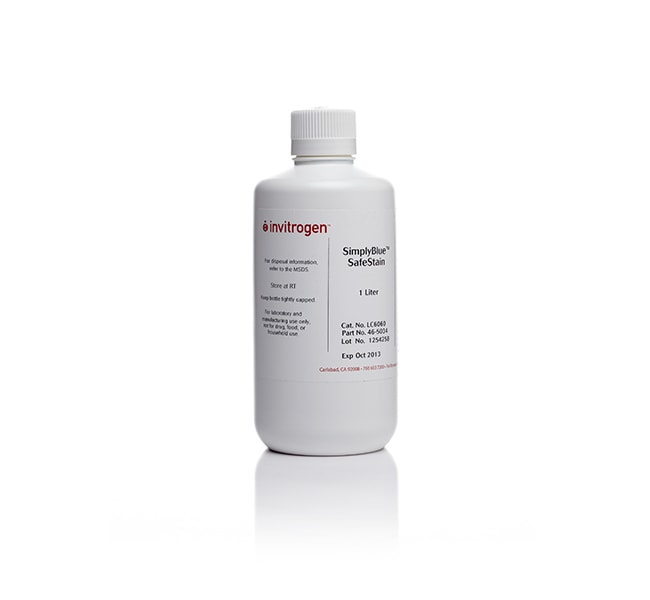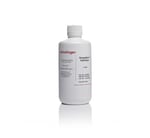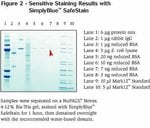Search Thermo Fisher Scientific
SafeStain SimplyBlue™
| Référence | Quantité |
|---|---|
| LC6060 | 1 l |
| LC6065 | 3,5 l |
Comparer toutes les colorations Coomassie ›
Protocole simple d’utilisation
Le protocole SimplyBlue SafeStain est facile à exécuter et peut être complété en moins de trois heures. Pour une vitesse supérieure, une procédure de micro-ondes simple peut être exécutée en 12 minutes. Aucune décoloration n’est nécessaire, mais celle-ci peut être effectuée avec de l’eau déionisée pour obtenir un degré de sensibilité maximal, notamment lors de l’analyse en aval, comme la spectrométrie de masse ou lorsqu’un fond transparent est requis.

Introducing iBlot 3 Western Blot Transfer System
Featuring higher throughput and built-in cooling for consistent protein transfer
Learn more ›
Figures


Customers who viewed this item also viewed
Documentation et téléchargements
Certificats
Safety Data Sheets
Foire aux questions (FAQ)
It is not recommended because the background will be too high. Better alternatives include:
1) Invitrogen Reversible Membrane Protein Stain Kit (Cat. No. IB7710).
2) Coomassie (non-colloidal) staining: stain in 0.1% Coomassie Blue R-250 in 50% methanol for 5 min and destain with several changes of 50% methanol and 10% acetic acid. Rinse with several changes of water, air dry and store for up to 12 months at -20°C. Sensitivity is approximately at the 50-100 ng level.
3) Use SimplyBlue SafeStain (Cat. No. LC6060). The SimplyBlue SafeStain manual has the protocol for staining PVDF membranes, but it is not recommended for nitrocellulose because of high background.
4) Amido Black: same as Coomassie but less sensitive.
5) Ponceau S: same as Coomassie but less sensitive.
6) UV transillumination: place membrane on filter paper after blot is finished and allow to dry at room temperature for about 10 min. Rewet in 20% methanol and view the blot in front of white light while it is still wet; the bands will look more translucent than the membrane. If the bands disappear as the membranes dries, rewet again.
Find additional tips, troubleshooting help, and resources within our Protein Electrophoresis and Western Blotting Support Center.
Coomassie G-250 will give a sharp dye front with both NuPAGE MES and MOPS Running Buffers and is therefore used as the tracking dye in the NuPAGE LDS Sample Buffer.
Bromophenol blue runs more slowly than some peptides with the NuPAGE MES Running Buffer system.
Coomassie G-250 migrates much closer to the moving ion front than bromophenol blue, ensuring that small peptides will not be run too far (e.g., off the gel).
Find additional tips, troubleshooting help, and resources within our Protein Electrophoresis and Western Blotting Support Center.
The Colloidal Blue Staining Kit (Cat. No. LC6025) is best for quantitation by densitometry. You can also use SimplyBlue SafeStain for this application.
The great advantage of SimplyBlue SafeStain is that it is very easy to use and safe.
Find additional tips, troubleshooting help, and resources within our Protein Assays and Analysis Support Center.
Check the cap on the bottle. If the bottles are not tightly sealed, the alcohol can evaporate from the stain causing substantial decrease in stain sensitivity.
Find additional tips, troubleshooting help, and resources within our Protein Assays and Analysis Support Center.
After staining with SimplyBlue SafeStain, use deionized water for the less strongly retained protein bands on the PVDF membrane.
Increasing methanol or ethanol concentrations up to 70% should destain any remaining bands. You can leave the membrane in the destain indefinitely.
Find additional tips, troubleshooting help, and resources within our Protein Assays and Analysis Support Center.



